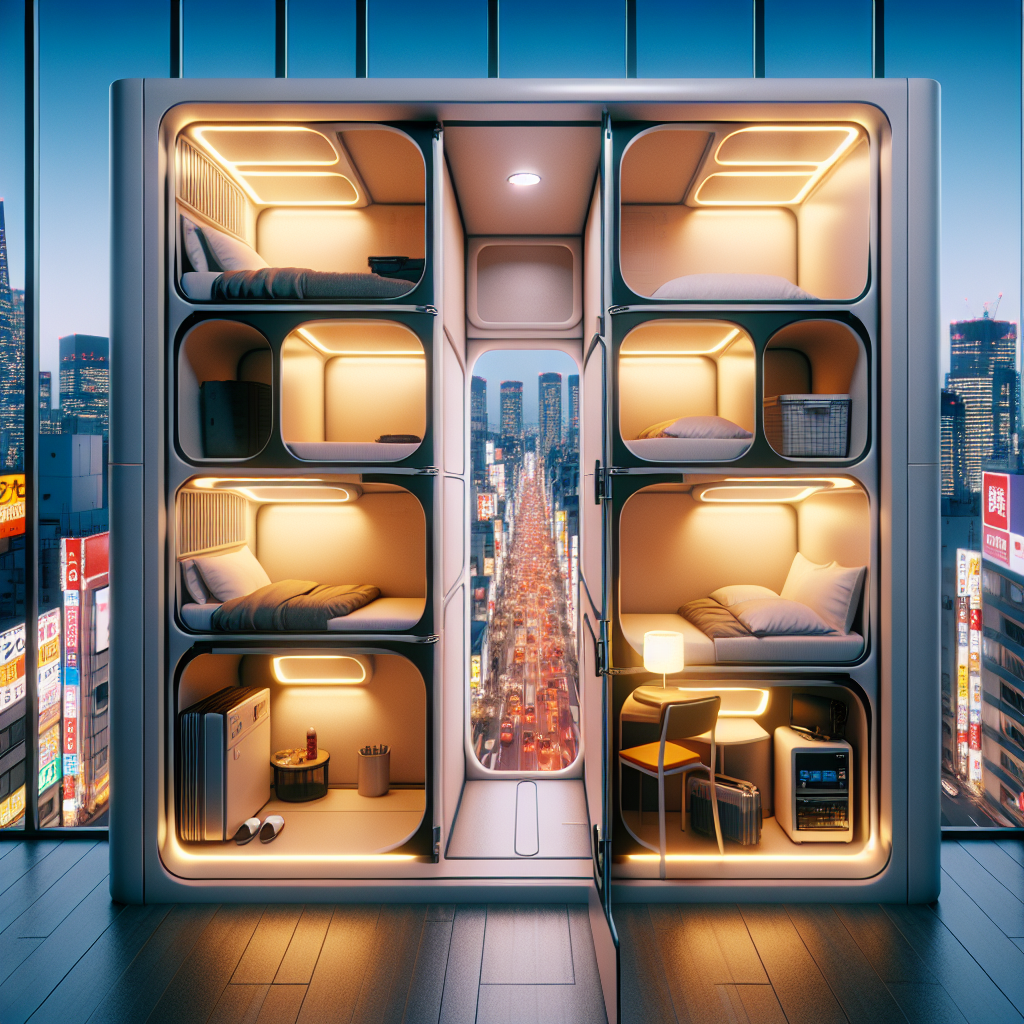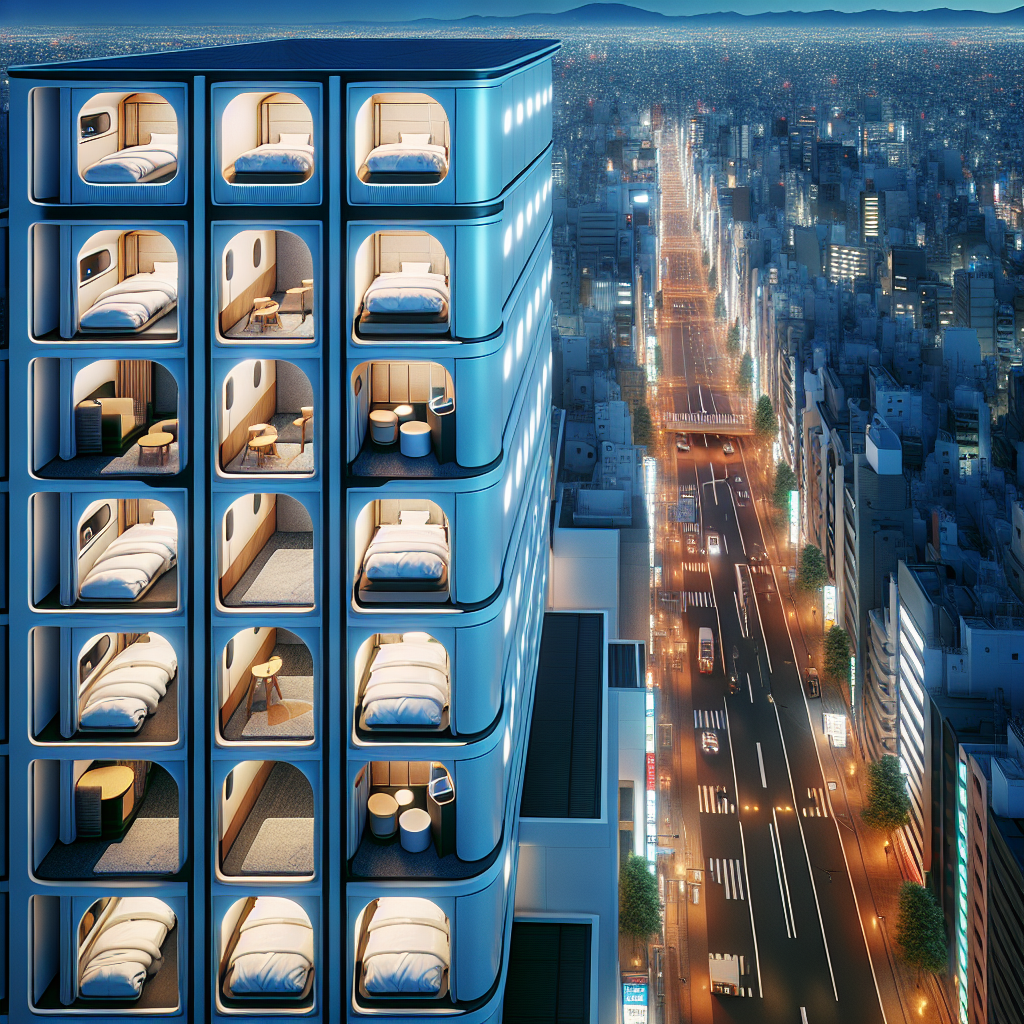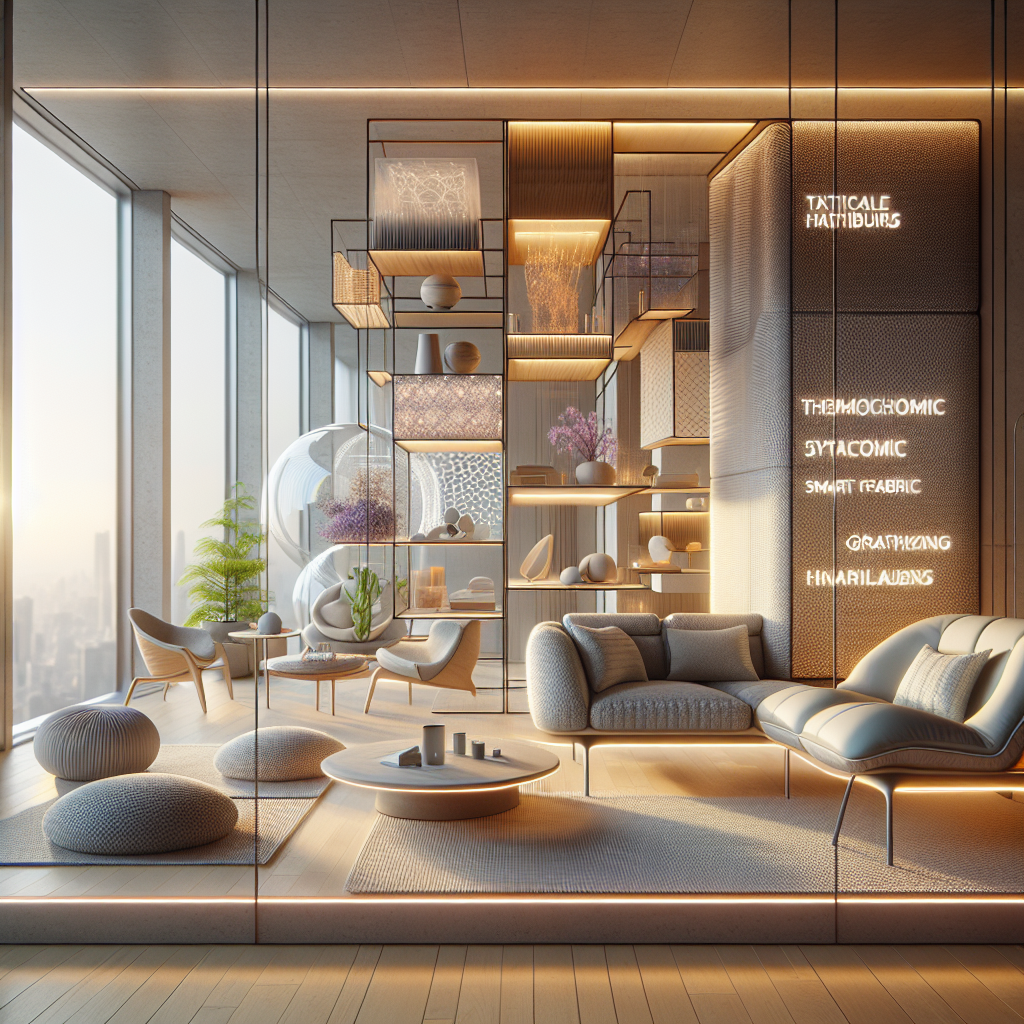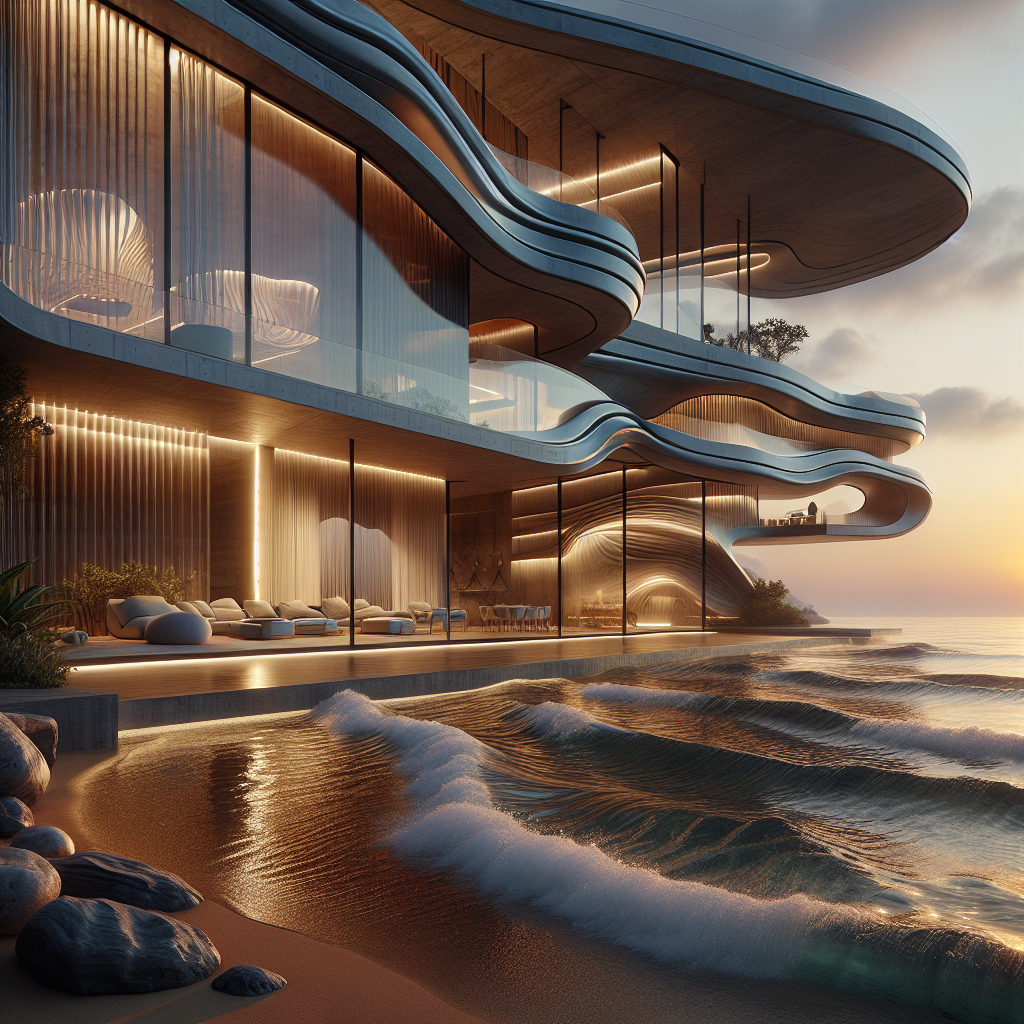Capsule Hotels: The Influence of Japanese Minimalism on Micro-Living Spaces

The Rise of Capsule Hotels: A Testament to Japanese Minimalism and Its Global Impact on Micro-Living Spaces
The concept of capsule hotels, which first emerged in the bustling heart of Osaka, Japan, in 1979, has since captivated the imagination of urban dwellers and travelers alike. This innovative approach to accommodation, characterized by its compact, stackable sleeping units, has not only transformed the hospitality industry but has also become a beacon of Japanese minimalism influencing the design of micro-living spaces worldwide.
As urban populations swell and the quest for affordable, space-efficient living solutions intensifies, the principles underpinning capsule hotels are being translated into residential designs. This fusion of functionality and aesthetics has sparked a revolution in the way we conceive and inhabit our personal spaces.
The Essence of Minimalism in Capsule Hotel Design
At the heart of the capsule hotel lies the ethos of minimalism: the art of living with less. This philosophy, deeply rooted in Japanese culture, emphasizes the importance of simplicity, clarity, and harmony. Each capsule, or pod, is meticulously designed to encapsulate these values, offering a tranquil retreat from the urban chaos. The focus on essentialism is evident in the way these pods are stripped down to the bare necessities – a bed, lighting, and sometimes a small entertainment system or Wi-Fi connection.
The influence of this minimalist approach extends beyond the confines of the hotel, inspiring architects and designers to rethink the concept of living spaces. The result is a wave of micro-apartments and tiny homes that prioritize efficiency and simplicity, much like the capsule hotels that paved the way.
Maximizing Space Through Innovative Design
One of the most compelling aspects of capsule hotels is their ingenious use of space. Designers and architects have taken cues from these compact havens to create micro-living spaces that are both functional and stylish. By employing clever storage solutions, multipurpose furniture, and modular components, these spaces are designed to adapt to the changing needs of their inhabitants.
The concept of transformable living areas, where a single room can serve multiple functions, is a direct nod to the capsule hotel’s ability to provide a complete living experience within a confined space. The idea that one can live comfortably and contentedly in a smaller footprint is gaining traction, as evidenced by the growing popularity of tiny homes and the micro-apartment movement.
Technology and Personalization in Micro-Living
Just as capsule hotels often incorporate advanced technology to enhance the guest experience, micro-living spaces are embracing smart home innovations. From automated lighting and climate control to space-saving robotic furniture, technology is being leveraged to make these compact quarters more livable and personalized.
The integration of technology also allows for a level of customization previously unattainable in traditional living spaces. Residents can tailor their environments to their preferences, much like the personalized capsules that offer control over lighting, sound, and entertainment. This shift towards a more interactive and responsive living space is a testament to the lasting influence of capsule hotels on modern living.
Sustainability and the Capsule Hotel Philosophy
The minimalist philosophy of capsule hotels extends to the realm of sustainability. The compact nature of these accommodations inherently requires fewer resources to build and maintain, thus reducing the environmental footprint. This principle is mirrored in the design of eco-friendly micro-living spaces that aim to minimize waste and energy consumption.
Materials such as bamboo, recycled plastics, and other sustainable resources are often used in the construction of these spaces, aligning with the eco-conscious ethos that capsule hotels inadvertently champion. The emphasis on sustainability is not only a response to environmental concerns but also a reflection of the minimalist principle of living with only what is necessary.
The Global Reach of Japanese-Inspired Micro-Living
The fascination with Japanese minimalism and the capsule hotel concept has crossed borders, influencing design philosophies around the globe. From New York to Stockholm, architects are drawing inspiration from the Land of the Rising Sun to create living spaces that are at once compact, efficient, and serene.
Projects such as tiny homes revolutionizing urban living and smart furniture for modern micro-apartments showcase the international appeal of this design trend. The capsule hotel’s legacy is evident in the proliferation of co-living spaces and hostel hybrids that cater to the needs of digital nomads and urbanites seeking community and connectivity within compact quarters.
The global design community continues to explore the possibilities of micro-living, often referencing the pioneering work of Kisho Kurokawa, the architect behind the first capsule hotel. His vision of a society that embraces metabolism, a concept that advocates for adaptable and sustainable architectural solutions, resonates strongly in today’s design landscape.
Embracing the Future of Micro-Living
As we look to the future, the lessons learned from Japan’s capsule hotels remain more relevant than ever. The challenge of creating livable spaces within increasingly dense urban environments calls for innovative solutions that balance the need for privacy with the desire for community.
The evolution of micro-living spaces, influenced by the minimalist principles and efficient design of capsule hotels, offers a glimpse into a future where living small doesn’t mean sacrificing quality or comfort. The trend towards minimalist living and space optimization continues to inspire designers and residents alike, promising a new era of urban living that is both sustainable and fulfilling.
As we embrace this shift, the capsule hotel stands as a symbol of the potential that lies in reimagining our living spaces. It’s a testament to the enduring power of Japanese minimalism and its ability to shape the future of architecture and design across the globe.
For more insights into the world of design and architecture, explore innovative architectural designs that are changing the way we think about our built environment.








